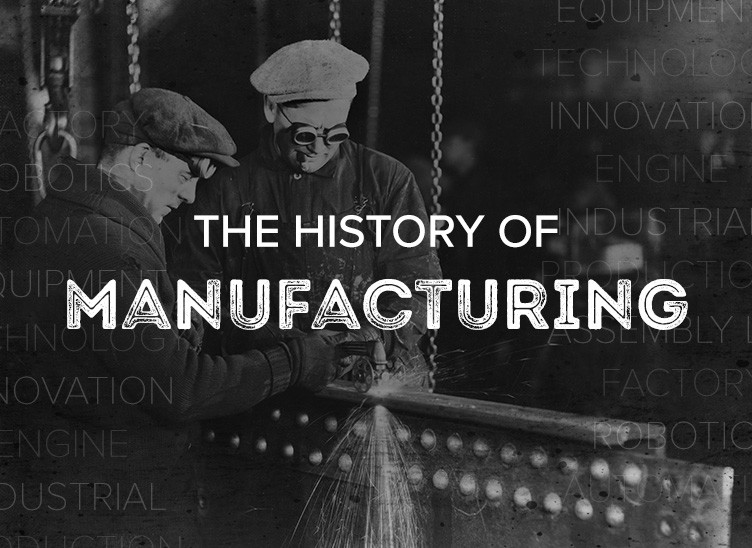
The History of Manufacturing
Manufacturing is an ever-changing industry. Using different processes and materials, there are so many aspects to manufacturing that innovation is constantly happening. To understand modern manufacturing, it helps to know its past. Manufacturing hasn’t been around for too long, and most of it started with the industrial revolution.
A Historical Perspective
Through history, factories were not where most products were made. Blacksmiths, carpenters, and other craftsmen had shops or sheds attached to their homes where they made goods with hand tools or basic machines. During the mid to late 1700s, Britain experienced a significant change to industry with the introduction of the steam engine and spinning wheel mechanisms.
In the early 1800s, Samuel Slater brought some of these technologies to Massachusetts from Britain and the Industrial Revolution began in America. It didn’t take long for other innovators to start finding ways to create new machines and devices to make work easier in other areas, especially the mining, agricultural, and textile manufacturing industries. This new way of production increased supplies and decreased the sale prices for consumers.
Factories and Assembly Lines
It didn’t take long for factories to start popping up all over the world using different production machines. In the early 1900s, another significant change came to factories when assembly lines began. Henry Ford and Charles Sorenson are credited with figuring out the key elements to this process and it once again spread to many industries. The entire process was streamlined and improved over time, especially when Toyota started “lean manufacturing”. This idea involves identifying and eliminating waste, while still improving production flow.
Robotics and Automation
Another significant contribution to manufacturing came when robotics were introduced to production lines in the 1950s and 1960s. This helped decrease production time significantly, as well as the variability in the quality of the products. Workers were still used to run and repair the machines, but production took a more hands-off approach. Automation came on the scene, reducing the number of needed workers in the production portion of manufacturing. Instead, an emphasis was put on hiring people to design, maintain, and operate the equipment.
Manufacturing Today
Many of these operations are still in use today, especially automation and assembly lines. Some of the most significant modern contributions that we have seen, and will continue to see, are in 3D printing, lasers, and computers. These help change the landscape of manufacturing because they improve the abilities of what manufacturers can accomplish.
Another area of improvement in modern manufacturing is found in materials. Rubbers, plastics, and metals are always seeing improvements to their design which improves the quality of a product. A manufacturing company today has more options available to them than ever before when helping design products for companies. Much of the innovation in manufacturing is found with U.S. manufacturing companies who find more affordable processes and materials for consumers.
As more people have ideas and can implement them, manufacturing processes continue to improve. With a focus on worker safety, energy used, and environmental concerns, manufacturing looks very different from the factories of the industrial revolution. The impact of digital devices and machines are constantly changing the manufacturing industry and will continue to do so in the future.
We aim to be at the forefront of technology when it comet to manufacturing. Clark Rubber & Plastic is here for all of your plastic injection molding, precision machining, and custom rubber manufacturer needs. Contact us today.
